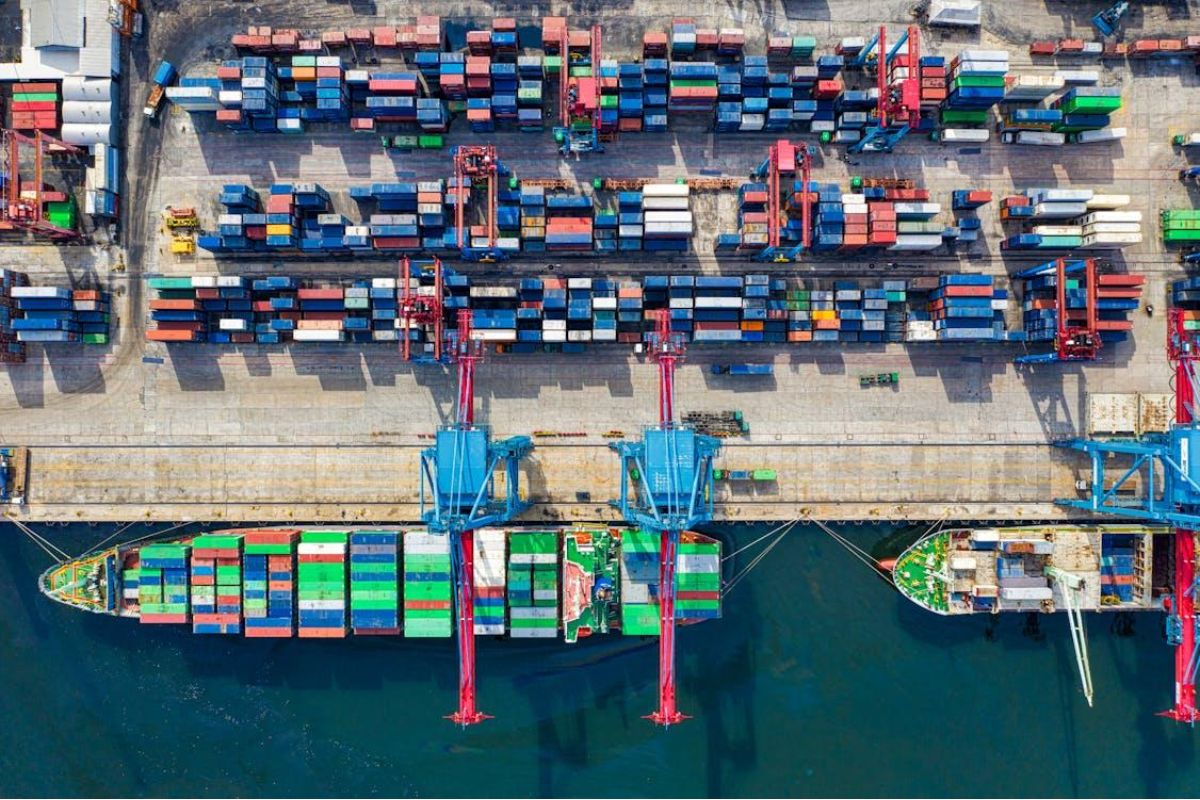The strength of a company’s supply chain can be the difference between success and failure.
A solid supply chain strategy enhances operational efficiency, minimizes costs, and maximizes customer satisfaction.
It is the backbone that supports the smooth running of any business that deals with goods and services.
By ensuring that every link in this chain—from procurement to distribution—is robust, companies can withstand market fluctuations and emerge as leaders in their industry.
Therefore, fortifying your supply chain is not just a good practice; it is an essential strategy that provides a competitive edge and drives sustainable growth. Let’s look at some ways you can ensure this.
Post Contents
- 1 1. Prioritize Transparency Across The Supply Chain
- 2 2. Work With Qualified Professionals
- 3 3. Leverage Technology For Better Forecasting
- 4 4. Strengthen Relationships With Suppliers
- 5 5. Implement Risk Management Strategies
- 6 6. Optimize Inventory Management
- 7 7. Focus On Customer Demand
- 8 8. Streamline Logistics and Distribution
- 9 9. Regularly Assess and Adjust Strategies
- 10 10. Foster A Culture of Continuous Improvement
- 11 Conclusion
1. Prioritize Transparency Across The Supply Chain
Transparency is crucial in today’s supply chain management. Businesses must have a clear view of every aspect of their supply chain to identify and address inefficiencies swiftly.
Transparent operations allow for the tracking of materials from origin to end product, which not only builds trust with stakeholders but also with consumers who are increasingly concerned about the ethics of manufacturing.
Implementing systems that provide real-time data can help detect problems early, prevent extensive disruptions, and maintain the integrity of the supply chain.

2. Work With Qualified Professionals
The complexity of modern supply chains requires not just skilled hands but informed minds.
Professionals with an online MBA supply chain degree can bring a wealth of knowledge and a fresh perspective to the table.
They integrate new skills, enhancing company processes with up-to-date strategies and digital tools.
The flexible learning model also allows businesses to access a broader talent pool and foster a culture of continuous improvement and innovation within their supply chains.
These programs focus not only on the traditional aspects of supply chain management but also on the integration of digital tools essential for modern business practices.
By working with these professionals, you can enhance your business’s ability to adapt to new challenges and optimize operations efficiently.
3. Leverage Technology For Better Forecasting
Advanced technologies are reshaping how businesses forecast demand and manage inventory.
Utilizing tools like artificial intelligence (AI) and big data analytics can lead to more accurate predictions and smarter decision-making.
These technologies analyze vast amounts of data to identify trends and predict future market conditions, allowing companies to adjust their strategies in real time.
By adopting these tools, businesses can reduce excess inventory, decrease storage costs, and ensure that products are available when and where consumers need them.
4. Strengthen Relationships With Suppliers
A strong relationship with suppliers is vital for a resilient supply chain. Regular communication and collaboration can help preempt problems and devise mutually beneficial solutions during crises.
Establishing long-term partnerships rather than transactional relationships encourages suppliers to invest in meeting your quality standards and delivery schedules.
Moreover, it opens up opportunities for negotiating better terms and gaining insights into new materials and technologies, which can further improve supply chain efficiency.
5. Implement Risk Management Strategies
Effective risk management is critical for minimizing supply chain disruptions. Working with a diversified set of suppliers can also reduce reliance on a single supplier.
By spreading your needs across multiple suppliers from different geographical locations, you can protect your business against regional disruptions, such as natural disasters or political instability.
Additionally, having well-thought-out contingency plans in place can enable your business to react swiftly and effectively to unexpected challenges, keeping your operations running smoothly and maintaining customer trust.
6. Optimize Inventory Management
Efficient inventory management is a cornerstone of a strong supply chain. By implementing strategies such as just-in-time (JIT) inventory systems, businesses can minimize their storage costs and reduce waste significantly.
JIT encourages producing or acquiring goods only as needed, which not only streamlines operations but also supports a leaner, more responsive supply chain.
Additionally, adopting technologies that automate stock monitoring can help prevent both overstock and stockouts, ensuring that inventory levels are kept at optimal levels to meet customer demands without unnecessary expenditure.

7. Focus On Customer Demand
Aligning your supply chain strategy with customer demand ensures that your business remains customer-centric, which is vital for sustained growth.
This involves not only tracking and forecasting demand with precision but also adapting to changing customer preferences and market conditions.
Implement feedback mechanisms to gather insights directly from your customers, and use this data to refine your product offerings.
By staying closely aligned with customer needs, businesses can better predict demand spikes, manage production cycles more efficiently, and maintain high satisfaction rates.
8. Streamline Logistics and Distribution
Streamlining logistics involves optimizing the flow of goods from suppliers to customers.
Efficient logistics reduce shipping times and costs, which are critical factors in customer satisfaction and overall cost management.
Utilizing route optimization software can significantly decrease delivery times by finding the most efficient routes.
Moreover, consolidating shipments and choosing strategic distribution centers can also help reduce transportation costs and environmental impact, making the supply chain not only faster but also more sustainable.
9. Regularly Assess and Adjust Strategies
A static supply chain strategy is unlikely to succeed in a dynamic market. Regular assessment and adaptation of your strategy are crucial.
Set up regular review intervals to evaluate the performance of your supply chain against set benchmarks and KPIs.
This proactive approach allows businesses to stay ahead of potential issues and pivot their strategies in response to new information or market changes.
By continuously improving processes and systems, companies can maintain high efficiency and responsiveness in their supply chain operations.
10. Foster A Culture of Continuous Improvement
Building a culture that values continuous improvement is fundamental to maintaining an effective supply chain.
Encourage team members at all levels to suggest improvements and innovations that streamline operations and enhance product quality.
This culture of innovation should be supported by continuous training and development programs that keep staff updated on the latest supply chain management techniques and technologies.
By empowering your employees and promoting a proactive attitude towards improvements, your supply chain can adapt and thrive even under challenging conditions.
Conclusion
Strengthening your supply chain strategy is not just about integrating new tools or technologies; it’s about creating a dynamic system that evolves with your business needs and market changes.
From prioritizing transparency and working with qualified professionals to fostering a culture of continuous improvement, each step contributes to building a resilient, efficient, and customer-focused supply chain.
As businesses continue to navigate a complex global marketplace, those that commit to continuously refining their supply chain strategies will find themselves well-equipped to handle challenges and capitalize on opportunities.
By implementing these strategies, companies can ensure that their supply chain not only supports current operations but also drives future growth and success.






























